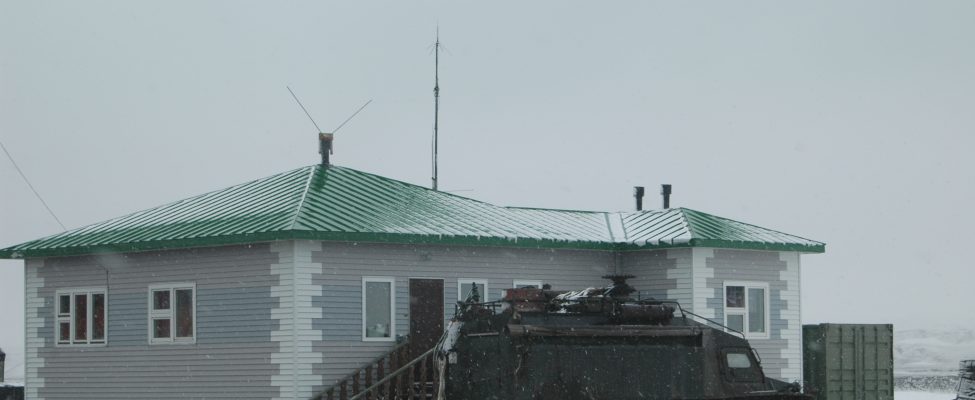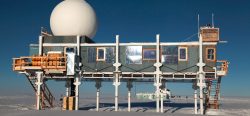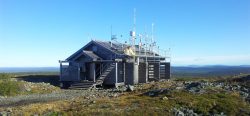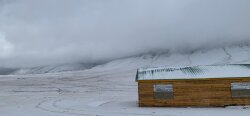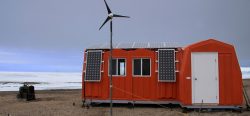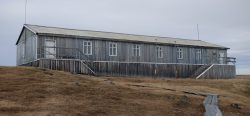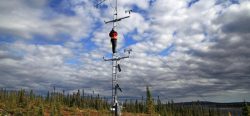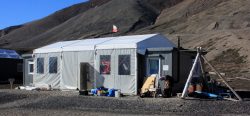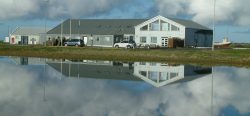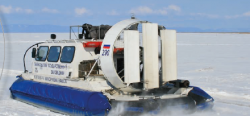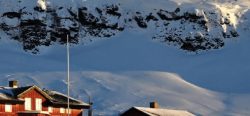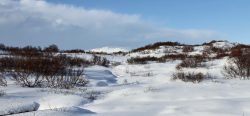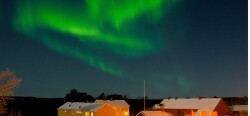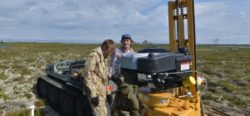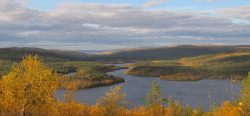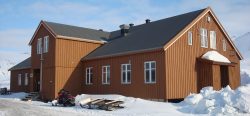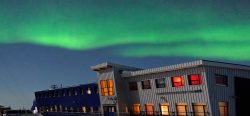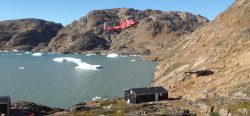Collaborator in the project until spring 2022
STATION NAME AND OWNER
Meinypil’gyno Community Based Biological Station is owned and run by the Russian bird conservation NGO – “BirdsRussia”, with support from the Government of the Chukotka Autonomous Region.
LOCATION
Meinypil’gyno Biological Station is located at Meinypil’gyno settlement, South Chukotka (62°32’ N, 177°03’ E), 250 km south of Anadyr City at the Bering Sea coast. It is located on a 40 km long lagoon spit next to moraine hills (up to 100 m a.s.l.) and Koryak Mountains (up to c. 1000 m a.s.l.) surrounded by brackish water channels connecting salty Lake Pekulney and freshwater Lake Vaamochka to the sea.
BIODIVERSITY AND NATURAL ENVIRONMENT
The weather is wet, windy, and foggy in summer, with lots of snowstorms in winter. The area has a very high diversity of ecosystems within reachable distance from the station. Coastal areas are occupied by high variety of different types of lowland tundraA type of ecosystem in which tree growth is limited by low temperatures. The origin of the word is from from the Kildin Sami word t?ndâr, meaning "uplands" or "treeless mountain tract". In the northern... More, including typical Chukotka tussocks, rather higharctic looking moss-sedge-lichen tundraA type of ecosystem in which tree growth is limited by low temperatures. The origin of the word is from from the Kildin Sami word t?ndâr, meaning "uplands" or "treeless mountain tract". In the northern... More on moraine hills, and dry crowberry tundraA type of ecosystem in which tree growth is limited by low temperatures. The origin of the word is from from the Kildin Sami word t?ndâr, meaning "uplands" or "treeless mountain tract". In the northern... More on spits. Inland areas have a variety of alpine vegetation types as well as hypo-arctic landscapes including willow and alder bushes. Further inland Beringian type pine bush forest-tundra dominates. Wetlands include different types of lakes, bogs, fresh-water deltas, and brackish lagoons. PermafrostPermafrost is frozen ground that remains at or below zero degrees Celsius (32 degrees Fahrenheit) for two or more years. It forms in regions where the mean annual temperature is... More is sporadic in part of area. The biggest Koryak Mountains GlacierA glacier is a large, persistent body of land-based ice that forms over many years where the accumulation of snow is greater than its loss (ablation). The ice in a... More, now shrinking in size, is located in 40 km west of the station. There are numerous geological features in the area and
the only known paleontological site for dinosaurs is only 30 km to the north. The area supports a high diversity of bird species, including the critically endangered spoon-billed sandpiper and the largest sea bird colony of Southern Chukotka. Nearby lakes are important red salmon spawning areas attracting high numbers of brown bears. Wolfs, Wolverine, and Mountain Sheep are not uncommon. Coastal waters support populations of gray whales, seals, and occasionally beluga whales. A walrus haul-out site is located 40 km away.
HISTORY AND FACILITIES
The station is hiring living space from local villagers for the field work period and owns a house for communal use (canteen, office space, internet spot etc) and permanent storage space for equipment and supplies. Up to 5 cottages each 50-100 m2 are rented every summer. Work is organized by a station managers from the local community, and mechanics and cooks are also hired locally. Up to 15 visitors can work at the station at the same time.
GENERAL RESEARCH AND DATABASES
Biological observations mainly focusing on birds were started in 2001 led by BirdsRussia in cooperation with Moscow State University and various Research Institutions. The station engages in community-based monitoring work and collection of traditional knowledge in the village. Weather records are made by automatic station installed in 2011. Long-term salmon fish resource monitoring is run by team of biologists from ChukotTINRO based in Anadyr. Meinypil’gyno is the only remaining breeding area of the Spoon-billed Sandpiper, one of most charismatic waders and the flagship of conservation of migratory birds of the East-Asian – Australasian Flyway.
HUMAN DIMENSION
The Meinypil’gyno settlement has a mixed Chukchi-Russian population of about 500 inhabitants. It was established 90 years ago in the area formerly used as summer camps by Chukchi reindeer herders. In earlier times, the coastal area was populated by the Kerek ethnic group and an unexplored archaeological site (Kerek city) is located just 20 km from the station. Main traditional activity is fishing and reintroduction of reindeer husbandry is discussed. The station has strong ties to the local community though involvement in monitoring and outreach activities (e.g. school courses and exhibitions).
ACCESS
Station is accessible by regular helicopter flights twice a month and in summer nearly every week; 1.5 hour flight by Mi-8 from Anadyr. Irregular cargo ships arrive from Beringovsky from July and supplies of goods arrive by bigger ocean ships in autumn. In winter, the station may be accessible by road, depending on weather conditions. Transport at the station consists of big-foot vehicle “Kerzhak” (carry up to 2 tons), 3 quad-bikes, one inflatable rubber motor boat, and a bicycle.
